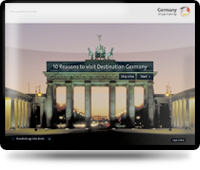Religious museums
- Rietberg Bible Village brings the Good Book to life
- Meersburg Bible Gallery
- Ziesar Castle
- German Bell Museum
- The Teutonic Order Museum at Bad Mergentheim
- Uncover the secrets of witchcraft and persecution at Penzlin Castle Museum
- Roggenburg Abbey Museum
- Cistercian Monks Museum at Walkenried Abbey
- Dalheim Museum of Abbey Culture
- Borgentreich Organ Museum
Roggenburg Abbey Museum
A fascinating museum within a fine baroque abbey
Contact:
E-Mail: [email protected]
Internet: http://www.kloster-roggenburg.de/
Travel Planner
Select an option...
Travel
A7, A8, A96, B300, train station
 Skip to content
Skip to navigation
Skip to subnavigation
Skip to search
Skip to content
Skip to navigation
Skip to subnavigation
Skip to search




